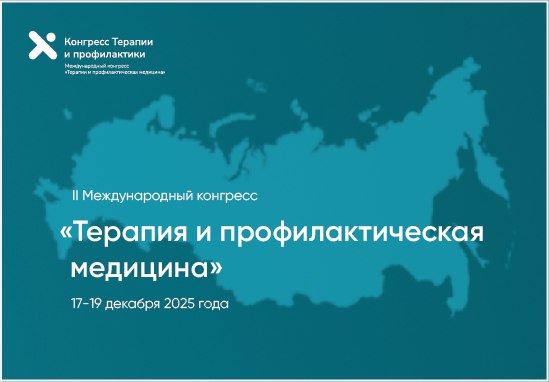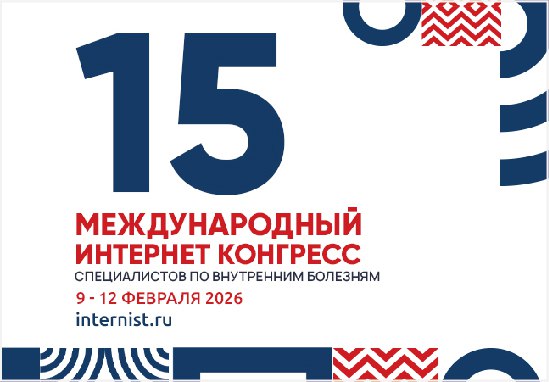Механизмы повреждения миокарда при операциях коронарного шунтирования
Аннотация
Статья посвящена рассмотрению современных научных представлений о механизмах повреждения миокарда при операциях коронарного шунтирования. Представлены современные публикации по данной проблеме — молекулярная основа и патофизиологические закономерности, развивающиеся при синдроме ишемии/реперфузии, рассматриваются возможные кардиопротективные стратегии.
Об авторах
Ш. Х. СамадовРоссия
аспирант клинико-диагностического отделения
И. В. Кокшенева
Россия
с.н.с. клинико-диагностического отделения
Список литературы
1. Бокерия Л.А., Чичерин И.Н. Природа и клиническое значение “новых ишемических синдромов”. Москва. Изд. НЦ ССХ им.А.Н.Бакулева РАМН 2007.
2. Andrukhiv A, Costa AD, West IC, et al. Opening mitoKatp increases superoxide generation from complex 1 of the electron transport chain. Am J Physiol Heart Circ Physiol 2006; 29: H2067-74.
3. Anselmi A, Abbate A, Girola F, et al. Myocardial ischemia, stunning, inflammation, and apoptosis during cardiac surgery: a review of evidence. Eur J Cardiothorac Surg 2004; 25: 304-11.
4. Baines CP, Molkentin JD. STRESS signaling pathways that modulate cardiac myocyte apoptosis. J Mol Cell Cardiol 2005; 38(1): 47-62.
5. Birdi I, Angelini GD, Bryan AJ. Biochemical markers of myocardial injury during cardiac operations. Ann Thorac Surg 1997; 63: 879-84.
6. Canton M, Skyschally A, Menabo R, et al. Oxidative modification of tropomyosin and myocardial dysfunction following coronary microembolization. Eur Heart J 2006; 27: 875-81.
7. Carlucci F, Tabucchi A, Biagioli B, et al. Cardiac surgery: myocardial energy balance, antioxidant status and endothelial function after ischemia- reperfusion. Biomed Pharmacother 2002; 56: 483-91.
8. Dirksen MT, Laarman GJ, Simoons ML, et al. Reperfusion injury in humans: a review of clinical trials on reperfusion injury inhibitory strategies. Cardiovasc Res 2007: 343-55.
9. Galinanes M, James M, Codd V, et al. TNF- gene promoter polymorphism at nucleotide-308 and the inflammatory response and oxidative stress induced by cardiac surgery: role of heart failure and medical treatment. Eur J Cardiothorac Surg 2008; 34: 332-7.
10. Heusch Ph, Skyschally A, Leineweber K, et al. The interaction of coronary microembolization and ischemic preconditioning: A third window of cardioprotection through THF-alpha. Arch Med Sci 2007; 2: 83-92.
11. Joashi U, Tibby SM, Turner C, et al. Soluble Fas may be a proinflammatory marker after cardiopulmonary bypass in children. J Thorac Cardiovasc Surg 2002; 123: 137-44.
12. Levy JH, Tanaka KA. Inflamatory response to cardiopulmonary bypass. Ann Thorac Surg 2003; 75: S715-20.
13. Maulik N, Yoshida T. Oxidative stress developed during open heart surgery induces inflammation: reduction of apoptotic cell death by ebselen a glutathione peroxidase mimic. J Cardiovasc Pharmacol 2000; 36: 601-8.
14. Meyer K, Klocke RC, Schipke JD, et al. Ca2+ sensitizer superior to catecholamine during myocardial stunning? Eur J Card Thorac Surg 2008; 34: 326-31.
15. Moens AL, Claeys MJ, Timmermans JP, et al. Myocardial ischemia/ reperfusion- injury, a clinical view on a complex pathophysiological process. Int J Cardiol 2005; 100: 179-90.
16. Schmitt JP, Schroder J, Schunkert H, et al. Role of apoptosis in myocardial stunning after open heart surgery. Ann Thorac Surg 2002; 73: 1229-35.
17. Sharma M, Ganguly NK, Chaturvedi G, et al. Release of proinflammatory mediators during myocardial ischemia/reperfusion injury in coronary artery bypass graft surgery. Molec Cell Biochem 2003; 247: 23-30.
18. Sherman SK. Perioperative myocardial ischemia reperfusion injury. Anesthesiol Clin N Amer 2003; 21: 465-85.
19. Sodha NR, Clements RT, Feng J, et al. The effects of therapeutic sulfide on myocardial apoptosis in response to ischemiareperfusion injury. Eur J Cardiothorac Surg 2008; 33: 906-13.
20. Thielmann M, Dorge H, Martin C, et al. Myocardial dysfunction with coronary microembolization: signal transduction through a sequence of nitric jxide, tumor necrosis factor-alpha and sphingosine. Circ Res 2002: 90: 807-13.
21. Triana JF, Li XY, Jamaluddin U, et al. Postischemic myocardial “stunned myocardium” identification of major differences between the open-chest and the conscious dog and evaluation of the oxygen radical hypothesis in the conscious dog. Circ Res 1991; 69: 731-47.
22. Valen G. The basic biology of apoptosis and its implications for cardiac function and viability. Ann Thorac Surg 2003; 75: S656-60.
23. Wakaiyama H, Cowan DB, Toyoda Y, et al. Selective opening of mitochondrial ATP-Sensitive potassium channels during surgically induced myocardial ischemia decreases necrosis and apoptosis. Eur J Cardiothorac Surg 2002; 21: 424-33.
24. Wang M, Crisostomo PR, Markel TA, et al. Mechanisms of sex differences in TNFR2- mediated cardioprotection. Circulation 2008; 118: S38-45.
25. Wei GZ, Zhou JJ, Wang B, et al. Diastolic Ca2+ overload caused by Na+/Ca2+ exchanger during the first minutes of reperfusion results in continued myocardiol stunning. Eur J Pharmacol 2007; 572: 1-11.
26. Zeller CN, Wang Y, Markel TA, et al. Role of tumor necrosis factor receptor 1 in sex differences of stem cell mediated cardioprotection. Ann Thorac Surg 2009; 87: 812-9.
27. Zorc M, Vraspir-Porenta O, Zorc-Pleskovic R, et al. Apoptosis of myocites and proliferation markers as prognostic factors in end-stage dilated cardiomyopathy. Cardiovasc Pathol 2003; 12: 36-9.
Рецензия
Для цитирования:
Самадов Ш.Х., Кокшенева И.В. Механизмы повреждения миокарда при операциях коронарного шунтирования. Кардиоваскулярная терапия и профилактика. 2010;9(8):75-80.
For citation:
Samadov Sh.Kh., Koksheneva I.V. Myocardial damage mechanisms in coronary artery bypass surgery (literature review). Cardiovascular Therapy and Prevention. 2010;9(8):75-80. (In Russ.)
























































